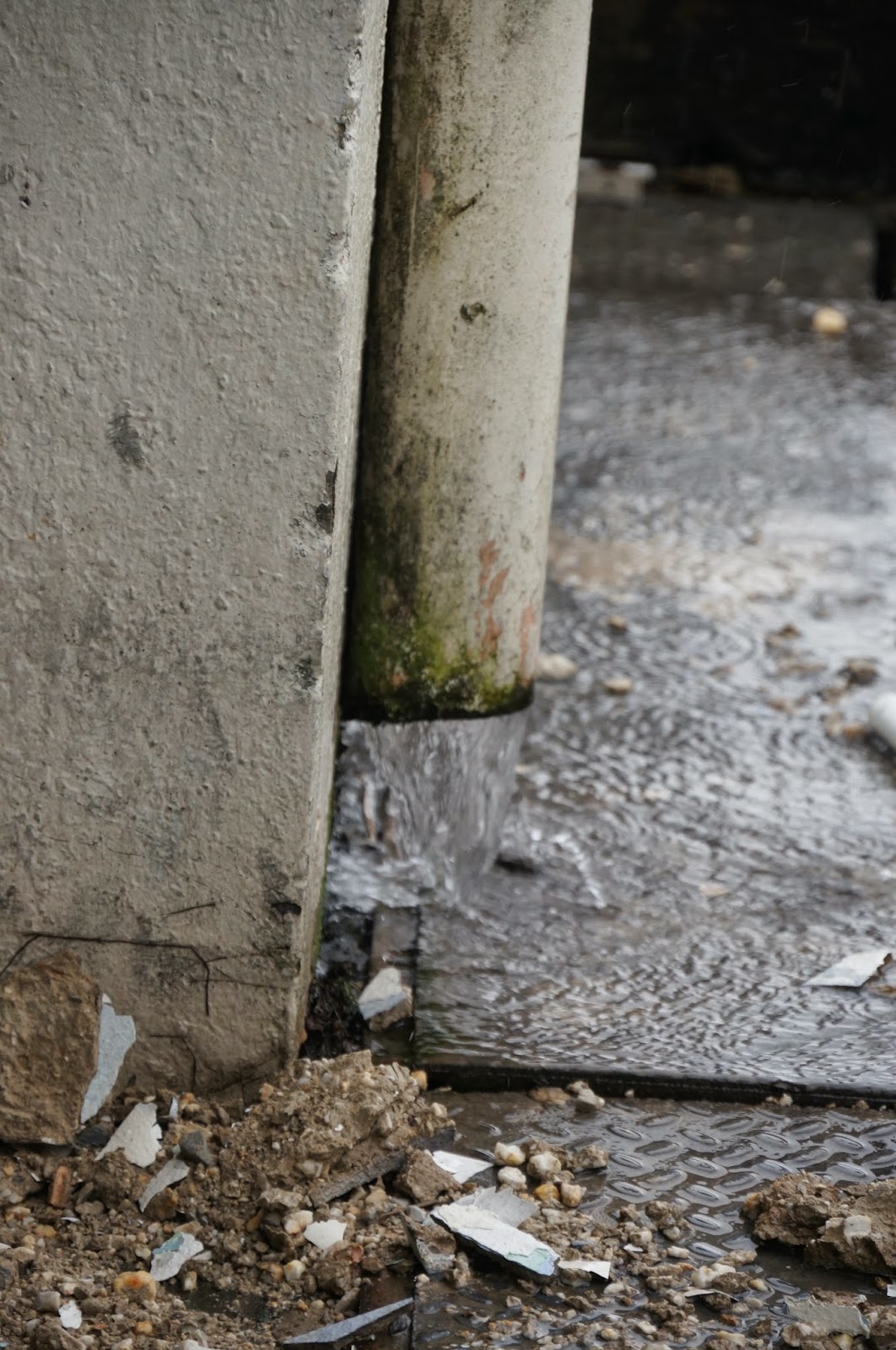Failed Column (2)
Since it failed during the raining night, then one of the reasons must be due to water. Somehow the water entered the foundation, either the soil becomes more soggy or the water erodes the foundation. Looking at the rainwater downpipe discharge, the rainwater did not enter the covered drain, some of it seeped through the floor crevices into the soil.
Then the cover was opened and observed, the drain was eroded with holes at the base, water had been consistently entering the soil instead of discharging to the big drain and into the river.
Then you see the big vehicles stopping just nearby due to traffic light, less than 2m away. When they moved, you could feel the building trembled.
If you have played clayey soil with the water, you will know the effect. When you pour a lot of water onto soft soil, some will seep in and come out somewhere, some will enter the soil structure and increase the moisture content, some will remain on the surface to be vaporised. But when you shake it with vibration, most of water will enter the soil structure, the soil will become so soft and may become liquefied.
After years of water entry and vibration, foundation gradually weakened and sank down. Based on the year of construction (during 1950s), the foundation was probably Bakau piles. The outer piles are the most affected, causing tilting towards outside.
As the walkway span is shorter than interior span (about 3m versus 6m), the outside column probably incurred tension when the foundation sank down, splitting the column. Loads are now transferred to interior column. It is important that this column must be able to carry the extra loads. Otherwise it will create a card type of failure.
Besides, the bars inside the cracked column and beam were quite badly rusted due to the long exposure to rain. Expanding rusting bars pressed against the concrete and aggravated cracking.
The building really needs to be fully investigated in details by studying the original plans, revised plans, history and execute physical investigation and testing to ensure overall safety.


No comments:
Post a Comment